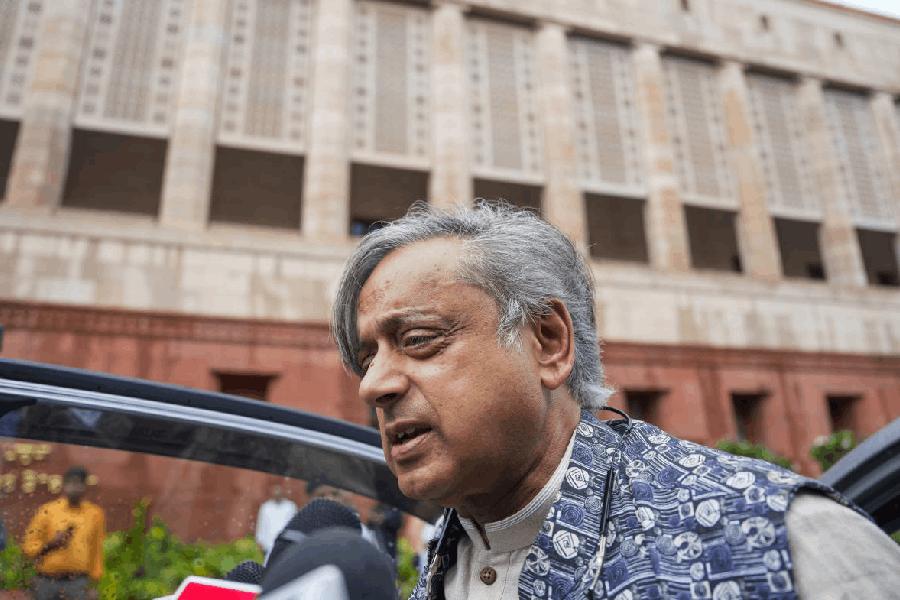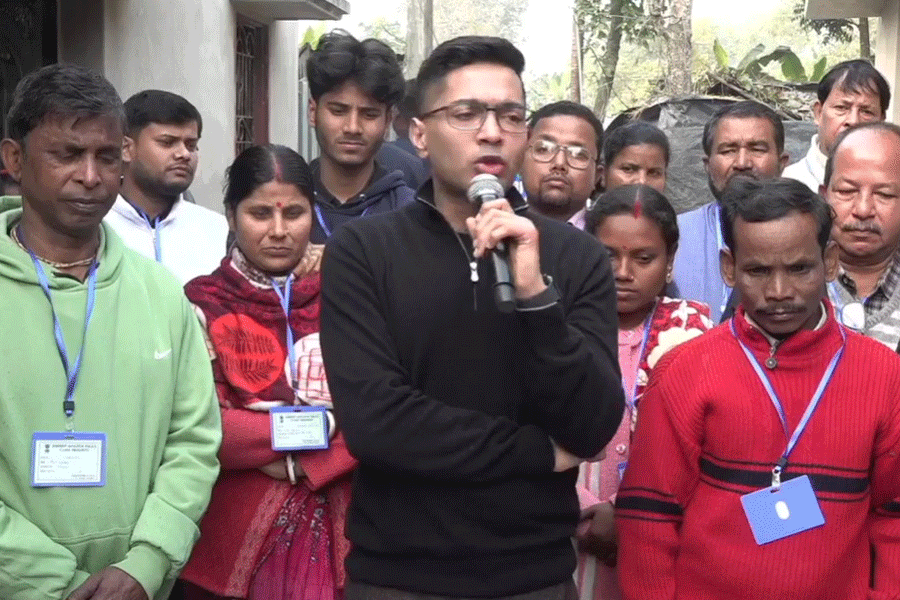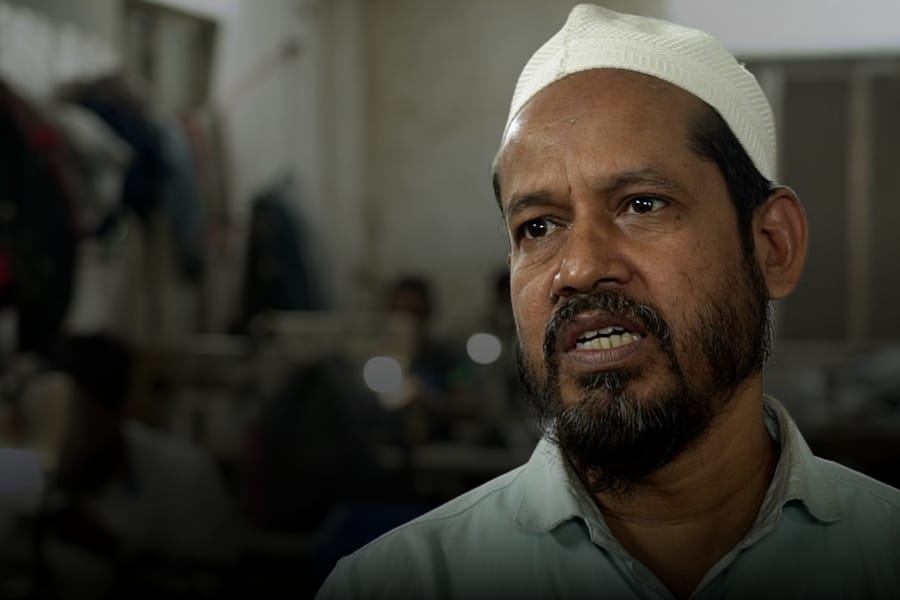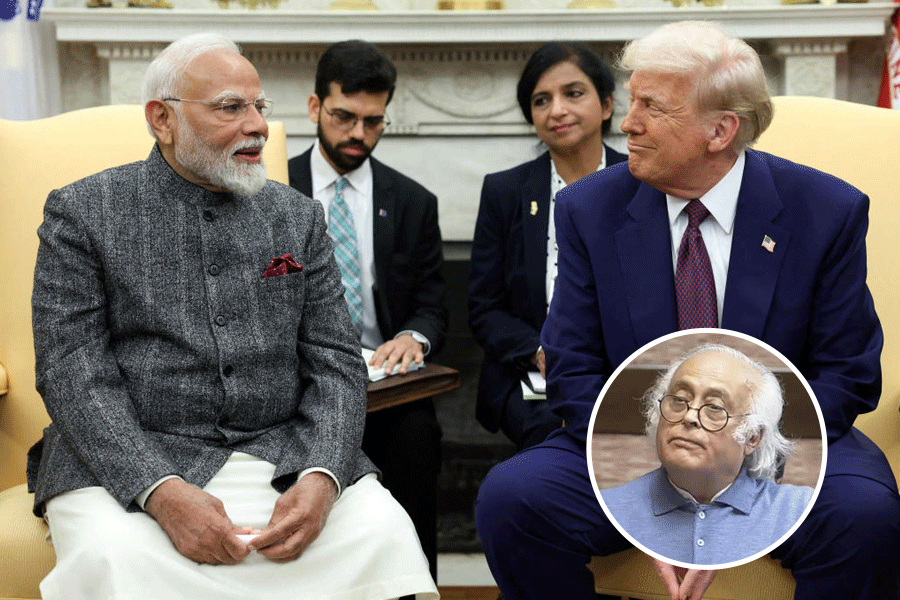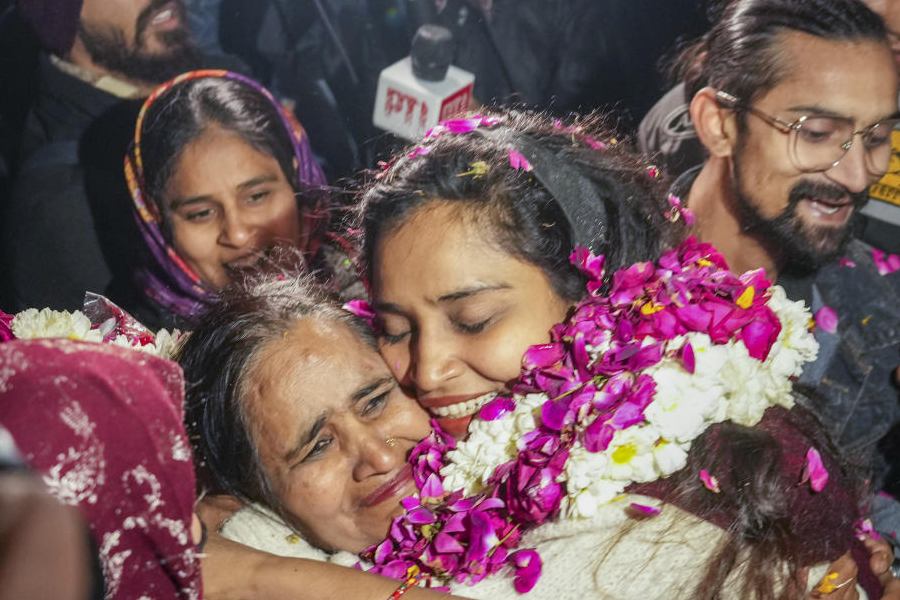 |
 |
| We are family: Amitabh Bachchan and Abhishek Bachchan performing in London |
Baton passed in latest Bollywood blockbuster
Watching The Unforgettable Tour tamasha last Sunday at the O2 Arena (previously known as the Millennium Dome) in London, some of us had the sense that the torch was being passed by Amitabh Bachchan to Abhishek.
Though Amitabh had top billing and had his appearance preceded by such understated descriptions on a large screen as “He who is worshipped and loved” and “He who is timeless”, it was he who was his son who was given the maximum exposure on stage.
From where I was sitting, the O2 Arena seemed pretty much packed out with 14,000 almost exclusively Indian, Pakistani and Bangladeshi fans. For two hours I had watched wave after wave of men, women and children emerge from North Greenwich underground on the Jubilee Line and quicken their steps as they realised the appointed moment for the darshan was nigh.
With such near religious devotion for the deities of the screen, there is little risk that Bollywood will worry too much about making “crossover” films for a global market. Why bother taking a commercial risk when the huge domestic and diaspora audiences are more than willing to pay anything from £38 to over £500 for tickets?
At one point, Amitabh appeared on stage with Aishwarya Rai, to be joined by Jaya and Abhishek. Then Amitabh and Jaya embraced, while Abhishek and Aishwarya did the same. Westerners would probably find all this cringe-making but Indians would understand the transition from, say, Sholay, to Guru.
Where the Bollywood shows have improved are in their production values. The London promoter, John Digwa, managing director of Showbiz International, who has bought the show “conceptualised” by Wizcraft, told me that the Bachchans were travelling with a troupe of 150, including dancers and technical staff. No fewer than 10,000 costumes had to be carried along.
He agreed that in the relay race of Bollywood, where dynasties are an integral part of life, a father was passing on the baton to his son.
“I don’t know when Amitabh Bachchan will come again,” confided Digwa. “He is a legend. It is natural that a father should want to do the most for his son.”
Shahs and Patels rule, ok?
These days it is not unusual to see Indian faces on University Challenge, a long-running television quiz programme for the brightest of bright college students.
In March, for example, we witnessed Aditya Balachander, an Indian law student raised in Texas, give an impressive performance for Sheffield University, which knocked out Magdalen College, Oxford.
Last week, though, I think we had a first — there was a (Nikhil) Shah and a (Rajan) Patel among the four pupils who led their team, the London School of Economics, to a convincing victory over the University of Bath by 200 points to 85.
Nikhil Shah, whom I happen to know, was a King’s Scholar at Eton and an undergraduate at Oxford before joining his MSc course at the LSE. It is especially encouraging that Shah and Patel displayed in-depth knowledge of non-scientific subjects, normally not the preserve of Indian students. Happily, this seems to be changing.
With the inclusion of a (Owais) Shah and a (Samit) Patel in the England one day cricket team, the Gujarati flag has never fluttered more proudly, Narendra Modi will be pleased to learn.
 |
| Crossing over: (Left to right) Sharmi Chowdhury, Jogen Chowdhury and Nilanjan Banerjee |
Art of the matter
There is not a more elegant exhibition space in London than the Henry Moore Gallery at the Royal College of Art, where ‘The Art of Santiniketan: Masters and Emerging Artists’ opened last week.
In all there are 120 works by 56 artists. But Jogen Chowdhury, Professor Emeritus and former principal of Kala Bhavan, Visva Bharati, stressed he had suggested twice as many names as Sangeeta Ahuja, of SA Fine Arts of London, was finally able to select.
“The younger artists are all my students so I left the selection to Sangeeta,” remarked Jogen Babu, flanked by two of the younger artists, Sharmi Chowdhury and Nilanjan Banerjee. “I suggested 100 names but only 40 were selected. But I am glad Sangeeta has managed this exhibition — it is the first one held abroad devoted to Santiniketan.”
Inaugurating the exhibition, Shiv Shankar Mukherji, Indian High Commissioner in London, described Santiniketan as “a way of life”.
Taken by the paintings she had seen, a middle-aged Indian woman, with a daughter in tow, cornered Jogen Babu.
“Tell me about it,” she requested, admitting she had not previously heard of Santiniketan.
An even bigger exhibition was required to do justice to Santiniketan, Jogen Babu told me.
He made a deeper philosophical point about the need to introduce school children to art from an early age.
“Not everyone will become an artist but art is necessary for someone to become a complete human being,” he said. “Under the communists, art has almost disappeared from government schools in West Bengal. Today, we have so much visual pollution. Without art a human being cannot really grow. That was Tagore’s idea.”
Scotch on the rocks
 |
| A Hero’s welcome: Scottish Olympians receive an ecstatic welcome in Edinburgh |
Celebrations continue after Great Britain’s best Olympics performance for a century. With 47 medals, including a remarkable 19 gold, 13 silver and 15 bronze, Great Britain came fourth behind China, the United States and Russia.
Team GB would have been pushed right down had it split into its constituent parts of England, Scotland and Wales.
The Scottish contingent received a separate ceremonial parade in Edinburgh. Pressed to declare his loyalties, Chris Hoy, the Scotsman who won triple gold in cycling, hit out after calls from “007 actor” Sean Connery for Scotland to go it alone at the Olympics.
“I was proud to represent Scotland in the Commonwealth Games,” said Hoy. “That’s something I will always cherish. Scotland is part of Britain — they are not mutually exclusive. I’m a proud Scot and I’m a very proud Brit as well.”
That wins Hoy a fourth gold — for diplomacy.
Tittle tattle
 |
| Retired hurt: Mushtaq Ahmed |
When knee problems forced the Sussex leg spinner, Mushtaq Ahmed, 38, to announce his retirement from cricket last week, the former Pakistani Test player was given an emotional farewell by his county colleagues.
During his county career, Mushtaq took 598 wickets, bowled more than 26,000 overs, was the leading wicket taker in the County Championship for the past five years, and helped Sussex to win three County Championships, the C&G Trophy and the Totesport Division Two title.
Sussex captain Chris Adams said: “Mushtaq’s legacy at the club is that he leaves us statistically, romantically and emotionally the best player to ever pull on a Sussex shirt.”
This generous remark should be taken in the right spirit but, historically, perhaps the Sussex man who left the greatest impact on his county and on cricket was Prince Ranji (the Nawab of Pataudi and Imran Khan also played for Sussex).
Ranji exceeded 1,000 runs in 10 successive seasons from his debut in 1895, passing 3,000 in 1899 and 1900. He also led the county for five years.
Gilbert Jessop, the fastest scorer of his day, described Ranji as “the most brilliant figure during cricket’s most brilliant period”.


